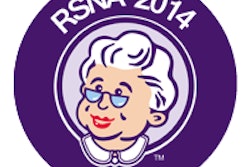After decades of rising CT utilization, U.S. doctors appear to have finally hit the pause button -- and even the reverse button -- reducing their use of CT scans in every setting except emergency radiology, according to a new study in the Journal of the American College of Radiology.
For 2010, the latest year available, Medicare records show that CT utilization declined by 1.7% overall in the U.S. compared to 2009. It would have fallen even more sharply but for the growth in emergency radiology, which rose 8.5% over the same time period, wrote Dr. David C. Levin, Dr. Vijay Rao, and Laurence Parker, PhD, from Thomas Jefferson University Hospitals and Jefferson Medical College.
It wasn't always so. CT was the fastest growing advanced imaging modality from 1998 to 2008, logging about 10% growth each year in the Medicare population. So the drop off is an important milestone, considering the many years of steady growth that preceded it, lead author Levin, professor emeritus of radiology at Thomas Jefferson University, told AuntMinnie.com.
"We only went back as far as 2000, but the rapid upswing began around 1997 and it kept on going until about 2008 or so," Levin said. "You could see by 2008 it was beginning to flatten out, and by 2010 it actually drops."
Concerns about cost and radiation exposure spurred the first real efforts at taming the utilization beast, the authors noted in JACR. First, a widely read 2007 paper by Brenner et al warned that as many as 2% of the cancers in the U.S. could potentially be attributed to radiation from CT studies.
That landmark paper was followed by a study in 2009 by Berrington de Gonzáles et al, warning that CT scans could be responsible for as many as 29,000 future cancers. Then Smith-Bindman et al warned in another paper that year that women undergoing coronary CT angiography were at higher risk for developing cancer.
"These allegations caught the public's attention and that of the major news media, which produced a number of fairly sensationalistic stories about the dangers of CT," Levin and colleagues wrote (JACR, November 2012, Vol. 9:11, pp. 795-798).
Although the notion of real harm from routine CT scans became more controversial after later authors pointed out that the linear no-threshold theory on which the warnings were based had never actually been proved, CT was, by then, cemented in the minds of the public and healthcare providers as risky. And in a positive step in everyone's view, campaigns such as the American College of Radiology's Image Gently and Image Wisely helped raise awareness of the need to minimize both the number of scans and their radiation doses individually and cumulatively.
Analyzing Medicare data
In the current study, Levin and colleagues -- in an effort to determine whether CT use was still growing -- searched the Medicare Part B databases from 2000 through 2010, which include about 35.3 million beneficiaries but exclude enrollees in the Medicare Advantage plan. The group searched all CPT codes for CT use, as well as place-of-service codes to determine the setting in which the scans were taking place, including hospital inpatient and outpatient departments, emergency departments (ED), private offices, and, in a few cases, in locations categorized as "other."
In nearly every location, CT use dropped between 2009 and 2010 after plateauing a couple of years earlier.
- CT use grew at a steady pace from 325 procedures per 1,000 beneficiaries in 2000 to 637 per 1,000 in 2009, representing a compound annual growth rate (CAGR) of 7.8%. CT use dropped for the first time in 2010, to 626 per 1,000, a 1.7% decline from 2009.
- For inpatient CT, there was a net CAGR of 5.5% between 2000 and 2009, compared to a drop of 4.5% in 2010. For hospital outpatients, CT use grew 5.1% between 2000 and 2009, and then fell 3.6% in 2010.
- Private-office CT use grew 11.3% between 2000 and 2009, but fell 7.8% between 2009 and 2010.
- Only emergency department CT use continued to grow, by 15.2% from 2000 to 2009 and increasing an additional 8.4% in 2010.
CT utilization
|
"The drop would have been a lot larger if it weren't for ED use," Levin said.
Considering the four primary sites where imaging is conducted -- inpatient, outpatient, private, and ED -- the emergency department was the only place where CT utilization has continued to increase. In fact, if one were to subtract ED utilization from all of the other settings in 2010, CT utilization would have dropped by 4.7% instead of by 1.7%, he said.
"The reason is that ED doctors have come increasingly to depend on CT, and they're [performing] CT on everybody," Levin said. "Defensive medicine has a big role in that. There are an awful lot of unnecessary scans done in the ED, and I think we need to get more aggressive in applying appropriateness criteria."
Still, applying even the best clinical criteria is easier said than done. In Levin's institution, for example, clinicians reference the Wells and Geneva scores for evaluating the need for CT in suspected pulmonary embolism. Were these criteria applied diligently in deciding whether to scan, the number of CT angiography scans for these cases would drop by half -- but they're not, and so they haven't, he said.
"I don't blame [ED doctors]; they're overwhelmed with work and have no time to evaluate patients clinically in a proper way, and CT is the easiest way to triage the patient," Levin said. As for the reasons behind the reduced utilization in nonemergency settings, they are multifactorial and include the following, according to Levin:
- The recession, though its impact would likely have been small and limited to 2008 and 2009.
- Concerns about radiation, which are making patients and referring physicians more careful about ordering CT scans of all types.
- Concerns about the cost of healthcare, which are trimming procedure volumes as major healthcare payors shift more of the burden to the patient, and employers shift more of the insurance cost burden toward their employees. These shifts weigh on both patients' and physicians' decisions to greenlight care.
- Radiology benefits managers (RBMs), who are stepping up their scrutiny of CT procedures beyond the more muted role they played when they were introduced about 10 years ago.
Of course, it remains to be seen if the downward trend in CT utilization will continue in future years, and with the 2011 figures coming out within the next month, Levin and his colleagues will be paying close attention. The group has mined the same data for MRI use, which will soon be published, he said.
Meanwhile, costs continue to rise as providers are forced to charge some groups of patients more to make up for losses they incur treating others. It will be interesting to see how the new healthcare law affects this dynamic, he said, and there is hope -- but no proof -- that it will have a moderating effect on patient costs.
Levin did not seem concerned, however, that demand for imaging services would drop too severely.
"In this country everybody demands the best, top-notch healthcare, instantaneously and at no cost -- and God forbid you miss a diagnosis, because you're going to get hit with a lawsuit," he said.




















